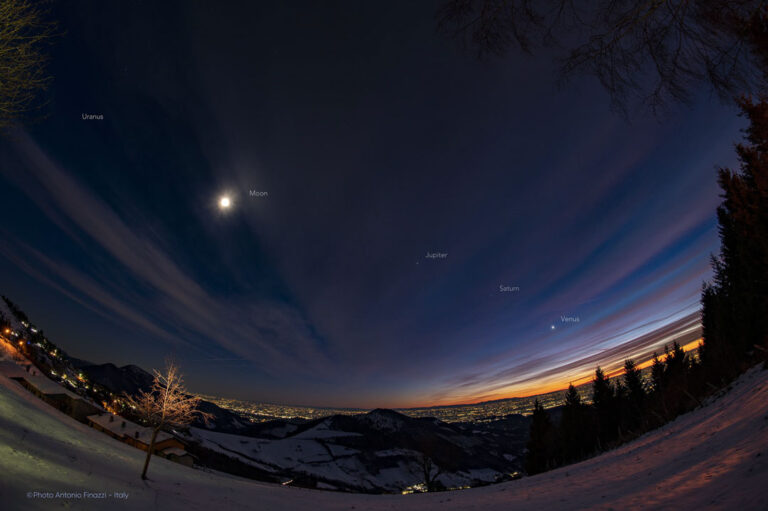意大利上空的四重叠合景观
A hazy night sky shows four lined up items. The closest two are lit-up buildings on hills. Looming large in the background, in alignment, is a gibbous Moon, distorted and reddened by the Earth’s atmosphere. Across the Moon’s face is a streak that is an airplane. Please see the explanation for more detailed information.
朦胧的夜空中,四个物体一字排开。最近的两个是山上灯火通明的建筑。背景中一轮盈凸月高高耸立,排列整齐,由于地球大气层的影响,它呈现出扭曲的红色。月面上有一道划痕,那是一架飞机掠过月亮时留下的轨迹。有关更多详细信息,请参阅说明。







